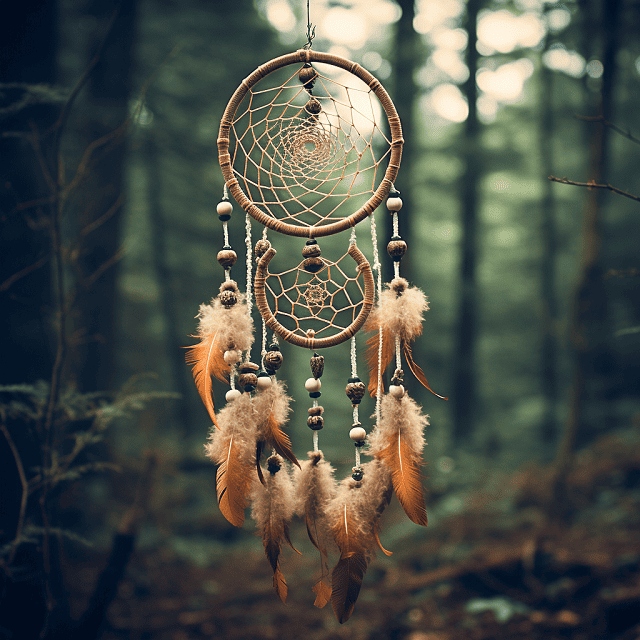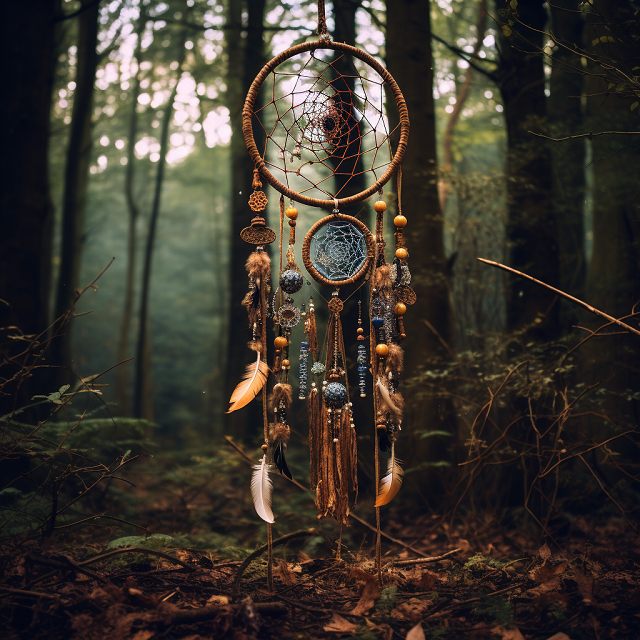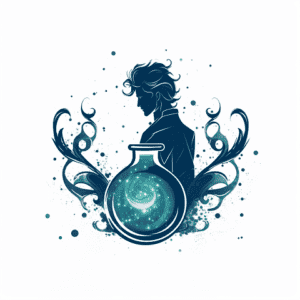All About Dream Catchers: Ever wondered about the magic behind dream catchers? You’re about to unravel the mysteries of these beautiful Native American symbols. They’re more than just pretty decorations; they’ve got a rich history and profound significance. We’ll delve into their roots, explore their meanings, and even give you tips on choosing your own. So sit back, relax, and let’s embark on a fascinating journey through the world of dream catchers. You’re guaranteed to learn something new!
The Historical Roots of Dream Catchers
You’re about to delve into the historical roots of dream catchers, where you’ll discover their origins and significance in Native American culture. Dream catchers have traveled far from their beginnings, transcending time and space to become a globally recognized symbol. Yet, their essence remains anchored in the ancient traditions of the Indigenous peoples of North America.
Dream catchers trace their origins back to the Ojibwe tribe, also known as Chippewa, who thrived in the regions now known as Michigan, Wisconsin, Minnesota, North Dakota, and Ontario. They believed that the night air was filled with dreams, both good and bad. The dream catcher, traditionally crafted with a wooden hoop, woven net or web, and decorated with sacred items like feathers and beads, was hung above the bed to ward off negative dreams and allow only positive ones to enter the dreamer’s mind.
The webbing, symbolic of a spider’s web, was believed to trap the bad dreams, which would disappear at first light. The good dreams, on the other hand, would slide down the feathers and gently fill the sleeper’s mind. Each component of the dream catcher held a specific significance; the circle represented the circle of life, the web caught the dreams, the feathers acted as a ladder for good dreams, and the beads, often gemstones, symbolized the spider – the web weaver.
From an emblem of protection to a token of cultural identity, dream catchers have evolved while retaining their spiritual essence. As you explore this captivating subject, remember to appreciate the deep-rooted cultural significance it holds for Native American tribes.
Symbolism and Significance of Dream Catchers
In your exploration of these symbolic objects, you’ll discover their significance rooted deeply in Native American culture. Dream catchers carry a rich history and purpose, serving as talismans to protect sleeping individuals from bad dreams and nightmares.
You’ll find the dream catcher’s design is not arbitrary. The circular shape, often made from willow, represents the earth’s cycle or the circle of life in Native American lore. The webbing, traditionally made from sinew, filters the dreams. Good dreams, according to legend, navigate through the web’s opening and glide down the feathers to the sleeper. Bad dreams, on the other hand, are said to be ensnared in the web and destroyed by the first light of dawn.
The beads or stones in the web are more than decorative. They’re considered the physical representation of the good dreams that couldn’t pass through the web. Often, you’ll find a single bead representing the spider that weaved the web. You see, the spider holds significance in Native American culture as a creature that spins its fate and is a symbol of protection and comfort.
Respect and acknowledgement of the dream catcher’s origins are paramount. It’s not just a pretty trinket; it’s a symbol of cultural heritage, a protection charm, and a spiritual tool. It’s a testament to the wisdom and spiritual beliefs of Native American tribes. So, when you behold a dream catcher, you’re not just seeing a craft; you’re witnessing a meaningful piece of Native American culture.

How Dream Catchers Are Made
Before diving into the crafting process, it’s important to note that the materials used are often symbolic and hold significant cultural meaning. In traditional Native American cultures, every element of a dream catcher has its own significance rooted in nature and spirituality.
To craft a dream catcher, you’ll first need to gather the necessary materials. These typically include:
- A hoop, traditionally made of willow, symbolizing the circle of life
- Sinew or thread, representing the spider’s web that catches the bad dreams
- Feather, often from an owl or eagle, symbolizing breath or air, the essential life force
- Beads, which may represent the spider itself, the weaver of the web
Start by forming the hoop, the backbone of your dream catcher. Once your hoop is formed, you’ll weave your web inside it. The pattern you weave is up to you, but remember that it should be intricate enough to trap bad dreams.
Next, you’ll add your feathers. These are typically attached at the bottom of the dream catcher, where they can swing freely in the breeze and “breathe”. Lastly, you’ll add your bead or beads, often placed in the webbing.
Dream Catchers in Different Cultures
While they originated in Native American cultures, you’ll find these symbolic objects have been adopted and adapted by many cultures worldwide, each adding their unique interpretations and variations. Notably, the Ojibwe people, also known as Chippewa, were the original creators of dream catchers. They believed these intricate webs could catch harmful dreams and let only good dreams filter through to the sleeper.
Over time, the Lakota Sioux tribe adopted and adapted the dream catcher tradition, adding their unique elements. They viewed the dream catcher as a symbol of unity among the Seven Sacred Nations. In their interpretation, the dream catcher’s web represented the spider woman, Asibikaashi, who watched over the people, especially children.
Outside of Native American cultures, you’ll find dream catchers in Australia, where they’re used in Aboriginal healing ceremonies. In Asia, particularly in Korea and Japan, they’re popular as interior decorations and believed to bring good luck. In Europe, they’re often seen in New Age shops, representing a fascination with Native American spirituality.
You’ll also find dream catchers appearing in contemporary art and tattoo designs, symbolizing protection, freedom, or even abstract concepts like dream pursuit. It’s important to remember, though, that these are sacred symbols in Native American cultures, so it’s essential to respect their origin and meaning.
Despite these varied interpretations, the core essence of dream catchers remains the same: to protect the sleeper from negative energies. While the design, materials, and meanings may vary, the heart of the dream catcher’s purpose is universal. It’s a testament to the enduring power of this ancient Native American tradition.

The Science Behind Dream Catchers: Do They Really Work
You might be wondering if these symbolic objects actually serve a purpose beyond their aesthetic appeal, or if there’s any scientific evidence to support the belief that they can influence your dreams. The answer isn’t as straightforward as you might think.
Scientifically speaking, there’s no hard evidence that dream catchers can filter your dreams. However, they may have a psychological effect. The belief in their power, rooted in Native American traditions, could potentially affect your subconscious mind. Here’s how:
- Placebo Effect: If you believe a dream catcher will filter out your bad dreams, it just might. This is due to the placebo effect, where believing in the effectiveness of something can actually alter your perception of reality.
- Symbolism: The intricate web of a dream catcher is symbolic of the spider woman, known as Asibikaashi, who, in Ojibwe legend, takes care of the people. This symbolism can provide a sense of security and protection, influencing your dreams positively.
- Rituals: The process of making or hanging a dream catcher involves certain rituals which can have a calming effect, possibly influencing the dream state.
- Aesthetics: The mere aesthetic appeal of a dream catcher can instil a sense of peace, which may indirectly affect your dreams.
Tips for Choosing and Using Dream Catchers
When it comes to picking the right symbol for your sleep space, there’s a few things you’ll want to keep in mind. Dream catchers, a sacred item in many Indigenous cultures, aren’t just decorative pieces. They carry deep spiritual meanings that need to be respected.
Firstly, understand the symbolism. In Ojibwe traditions, the dream catcher’s web is said to filter out bad dreams, letting only good ones pass through. The feathers attached to it then gently carry these good dreams down to the sleeper.
Next, consider the materials. In line with Native American traditions, you should opt for natural materials. Hoops made from willow branches, webs woven from sinew, and feathers from local birds – each element has a purpose, a connection to nature.
Then, think about the colors. Many Indigenous tribes associate different colors with various aspects of life and nature. For instance, red often symbolizes courage and strength, while blue can represent wisdom and confidence.
Lastly, position it properly. Traditionally, it’s hung above the bed, where the morning light can hit it. This is believed to burn away the bad dreams caught in the web.
Frequently Asked Questions
Can Dream Catchers Be Used as Regular Home Decor or Do They Always Carry a Spiritual Significance?
Absolutely, you can use dream catchers as regular home decor. However, it’s important to remember they originate from Native American cultures and carry spiritual significance. While they’re often seen as beautiful art pieces, they’re traditionally used to protect against negative dreams. So, while you’re free to enjoy them purely for their aesthetic value, understanding and respecting their cultural significance can add a deeper layer to their presence in your home.
Are There Specific Rules or Customs to Follow When Gifting a Dream Catcher?
When gifting a dream catcher, there aren’t specific rules, but it’s important to be respectful of its Native American origins. You’re not required to follow any customs, but it’s best to understand the symbolic meaning. Traditionally, it’s a protective talisman meant to ward off bad dreams. If you’re giving it as a gift, it’s a thoughtful gesture to explain this significance. Always ensure it’s ethically made, supporting indigenous artists rather than mass-produced versions.
How Do I Maintain or Clean a Dream Catcher Without Damaging It?
You’re walking on eggshells when cleaning a dream catcher, aren’t you? Fear not! Gently dust it off with a feather duster or soft cloth. Avoid using water or chemical cleaners as they can damage the materials. If it’s really dirty, shake it outside to dislodge debris. Remember, in Native American tradition, care and respect are essential when handling these sacred objects. Treat your dream catcher with kindness, and it’ll continue to serve its purpose.
Are There Any Popular Myths or Legends Associated With Dream Catchers?
Absolutely, there are numerous myths and legends linked with dream catchers. Most originate from Native American cultures, particularly the Ojibwe and Lakota tribes. They often depict dream catchers as protective charms that trap bad dreams in their web, allowing only good dreams to slide down the feathers to the sleeper. Remember, it’s crucial to respect these traditions as sacred aspects of indigenous cultures.
Can I Create My Own Dream Catcher or Does It Need to Be Made by Someone With Specific Knowledge or Skills?
Absolutely, you can create your own dream catcher! There’s no rule that it has to be made by someone with specific knowledge or skills. It’s the intention you put into it that matters. Native American traditions encourage learning and participating in cultural practices. Choose your materials thoughtfully, weave your web with care, and remember the purpose: to catch bad dreams. It’s a creative and meaningful project, steeped in rich cultural history.

Conclusion
In the end, it’s about intertwining beliefs and reverence. Dream catchers, steeped in history yet a beacon of contemporary culture, serve as a testament to the indomitable spirit of Native American traditions. They bridge the gap between scientific curiosity and spiritual faith. Choosing and using them isn’t just about aesthetics, it’s about embracing a heritage, a symbol of protection, a whisper of ancient wisdom. So, as you welcome a dream catcher into your space, you’re honoring a rich tapestry of stories and meanings.

